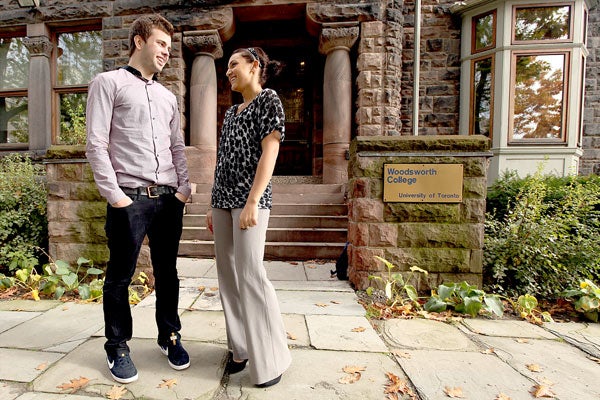
Helping more students earn and learn
Published: October 19, 2012
Nicholas Pcholkin, a first-year student from the Netherlands, is getting a unique opportunity to explore Toronto through his part-time job at the Woodsworth College residence.
As community outreach assistant, Pcholkin helps fellow students find outreach and volunteer opportunities.
“The idea is to get residents involved in the outside community,” Pcholkin says.
The job wouldn’t have been available to him a year ago. But as a result of changes to the University of Toronto’s work-study program, more students are now able to participate in on-campus jobs that allow them to earn and learn.
The changes followed a move in the Ontario government’s April budget to eliminate $2.5 million in funding for the work-study program
In May, Provost Cheryl Misak announced that the university would maintain the program on its own, but remove many of the restrictions the government had required.
For example, students no longer need to be eligible for the Ontario Student Assistance Program (OSAP) which means that international students such as Pcholkin as well as part-time students can participate.
This was welcome news for fourth-year political science student Najva Amin, who had long wanted to participate in the work-study program, but couldn’t because she wasn’t OSAP-eligible.
Today, Amin also works at Woodsworth College, organizing leadership education events and workshops.
“I am really passionate about leadership education and this position gives me a lot of opportunities to be creative,” says Amin.
The learning that comes from these positions is what makes the work-study program so important to the university.
“Work-study positions are ideally work opportunities that develop skills and competencies that support and enhance those acquired through academic study,” says Professor Jill Matus, vice provost, students. “They are thus a significant aspect of our students’ education and learning.”
Results from the National Survey of Student Engagement demonstrate that students who work on campus become more engaged in co-curricular and extra-curricular activities, Matus says.
“The greater the opportunities we can provide for our students on campus whether by way of academic courses, jobs, clubs and activities, the better the student experience will be,” she says.
Some offices at U of T have also created extra enrichment opportunities for work-study students. Units within the Office of Student Life collaborated with colleagues in the Sexual and Gender Diversity Office, New College, Woodsworth College and the Faculty of Applied Science & Engineering to establish a four-hour-long training session. Topics included customer service, leadership and an overview of services available at U of T.
Kate Bowers, a student life coordinator in U of T’s leadership development program, helped organize the session.
“We identified some core knowledge that we felt was important for our work-study students to have,” she says.
Additional workshops will take place throughout the year, along with a mentorship program that will pair work-study students with U of T staff members to learn more about the university and to discuss their own professional development. Bowers, who first worked in the leadership development office as a work-study student while studying at U of T, says the experience helped her identify leadership education as career option.
For Pcholkin, the experience he is gaining through the work-study program isn’t just equipping him with the standard job skills. It is helping him get to know his new home: Toronto.
“Toronto is so diverse and I’ve been really able to experience that… by going out and meeting different people. It has been pretty interesting,” he says.



